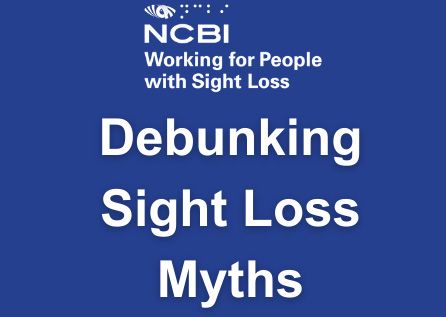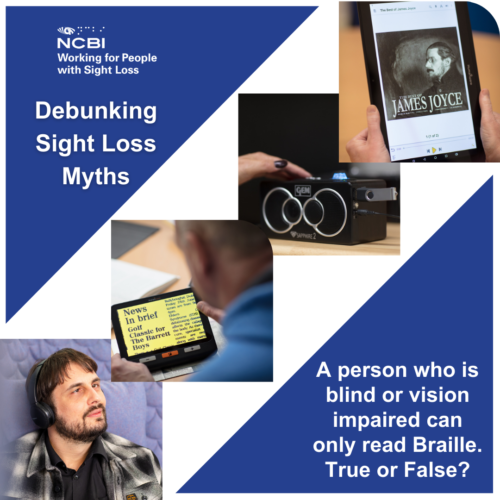
A person who is blind or vision impaired can only read Braille. True or False?

Braille is an integral resource for people with sight loss, but it is not the only way that a person who is blind or vision impaired can read, so this is false.
Braille is a tactile system which empowers some people who are blind or vision impaired to read despite their respective conditions. It is a system of raised dots that are touched with a person’s fingers and those dots form letters and words which are learned by the reader.
Reading Braille may be learned by people who have no residual vision as a result of their sight loss condition or acquired sight loss, but this is not a given. It is not a requirement for people who have sight loss to learn Braille as other mediums are available.
Some people who have residual vision can still read in the traditional sense, while others may use different formats or aids to help them to read using their remaining vision. Formats like large print are just as integral among the sight loss community as Braille, while books and publications are often transferred into an audio format for people who prefer to use this medium.
Technology is another huge enabler for people who experience sight loss. Screen readers allow people who are blind or vision impaired to read online information on websites, PDFs, Word documents and more. Less technical technologies like magnifiers and CCTVs make it easier for people with vision impairments to read printed materials that are not readily available in more accessible formats.
In many cases, Braille is learned by people who were born with a sight loss condition or who acquired their sight loss at a very young age. These situations are more fluid than ever, though, as the development of accessible technologies has changed the notion that it’s Braille or nothing.
The point here is that sight loss is a spectrum and conditions affect people in different ways. Some people will need or want to use Braille, while others may select a different medium or a combination of mediums in favour of learning or reading Braille. Each person is different and will have a preference.
More information about books and reading material in accessible formats can be found through the NCBI Library here. Information about technologies available for reading can be found through NCBI Labs here. If you have any questions about training related to this topic, don’t hesitate to call the NCBI Infoline on 1800 911 250. Part one of the Debunking Sight Loss Myths campaign can be found here.